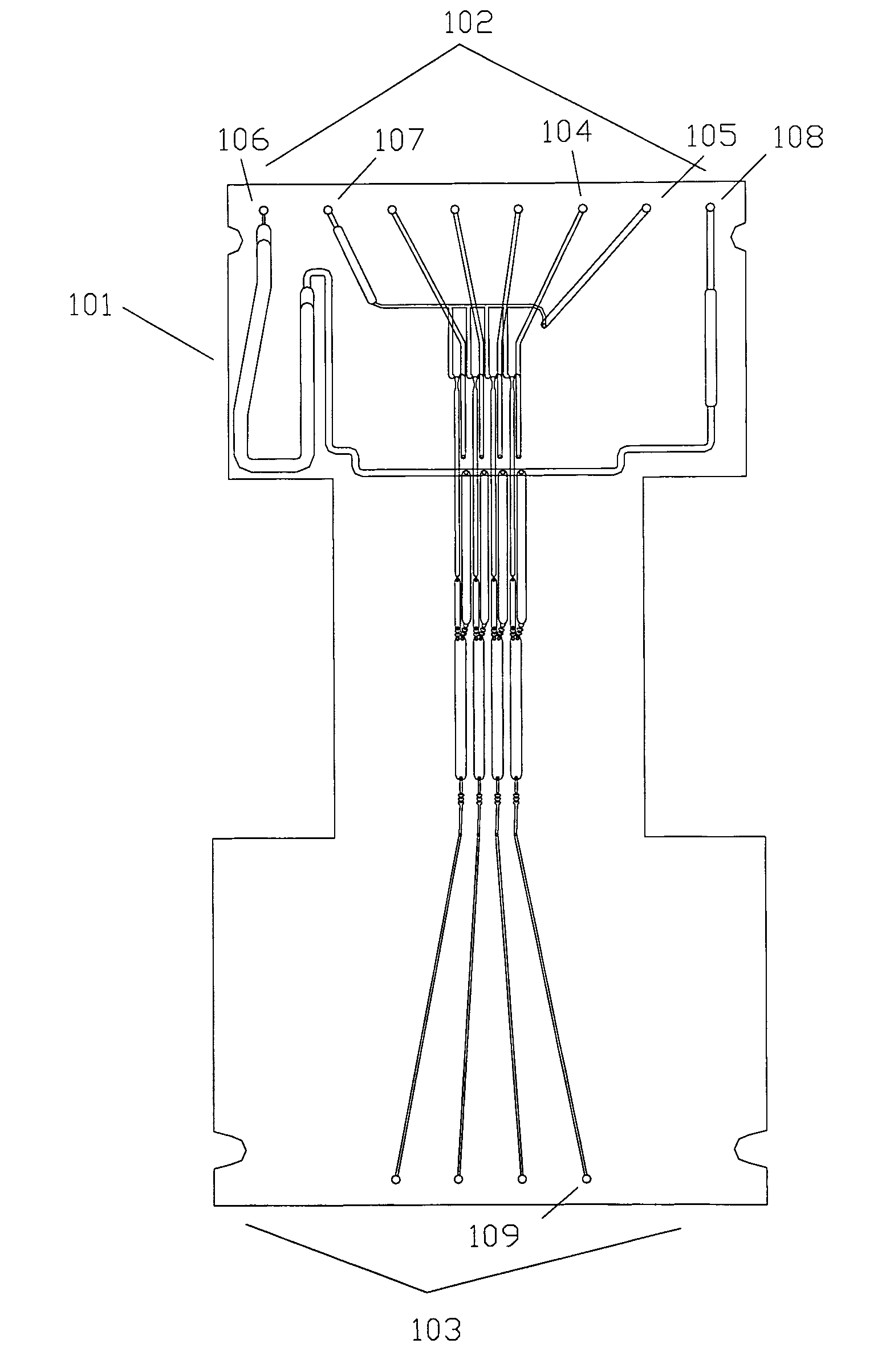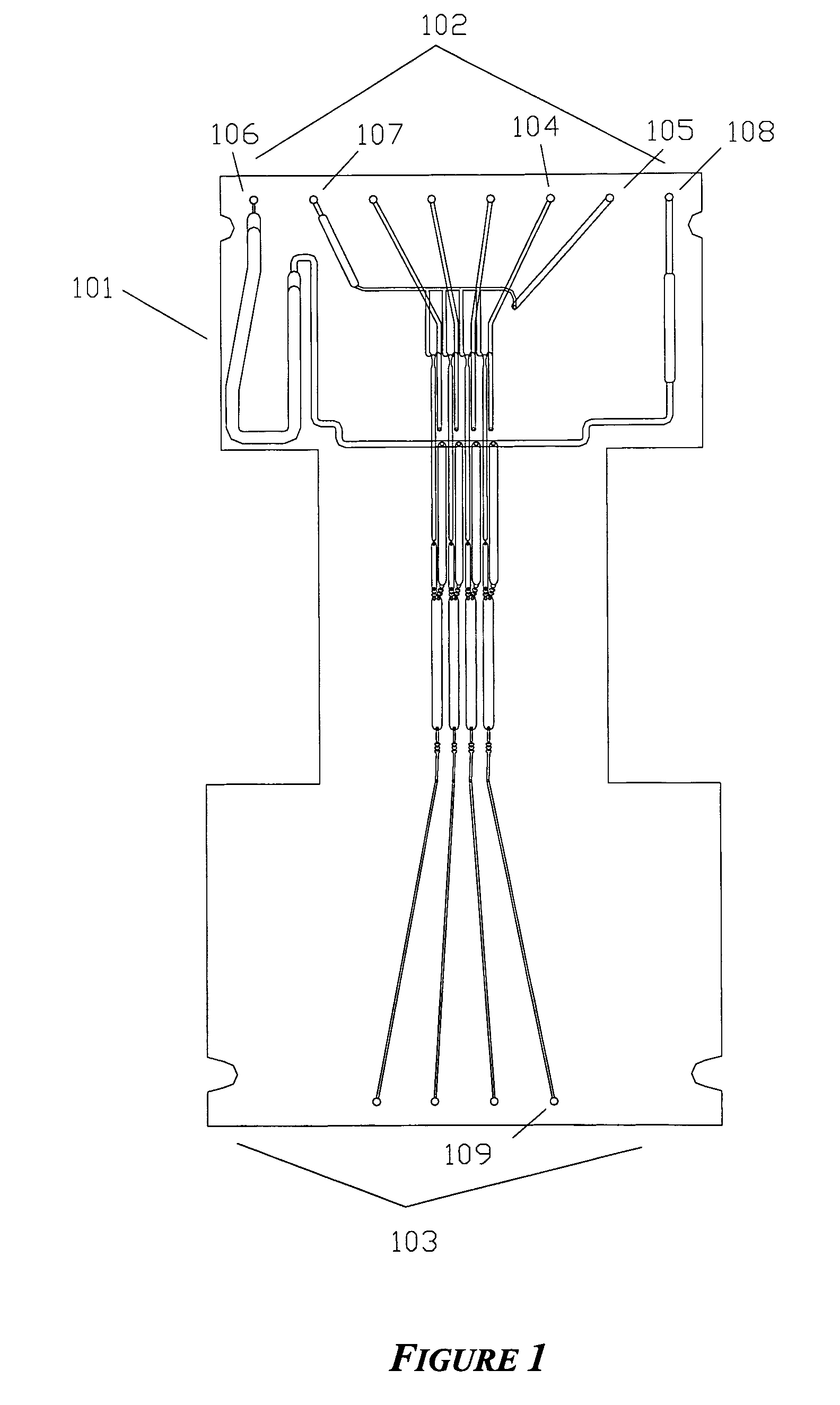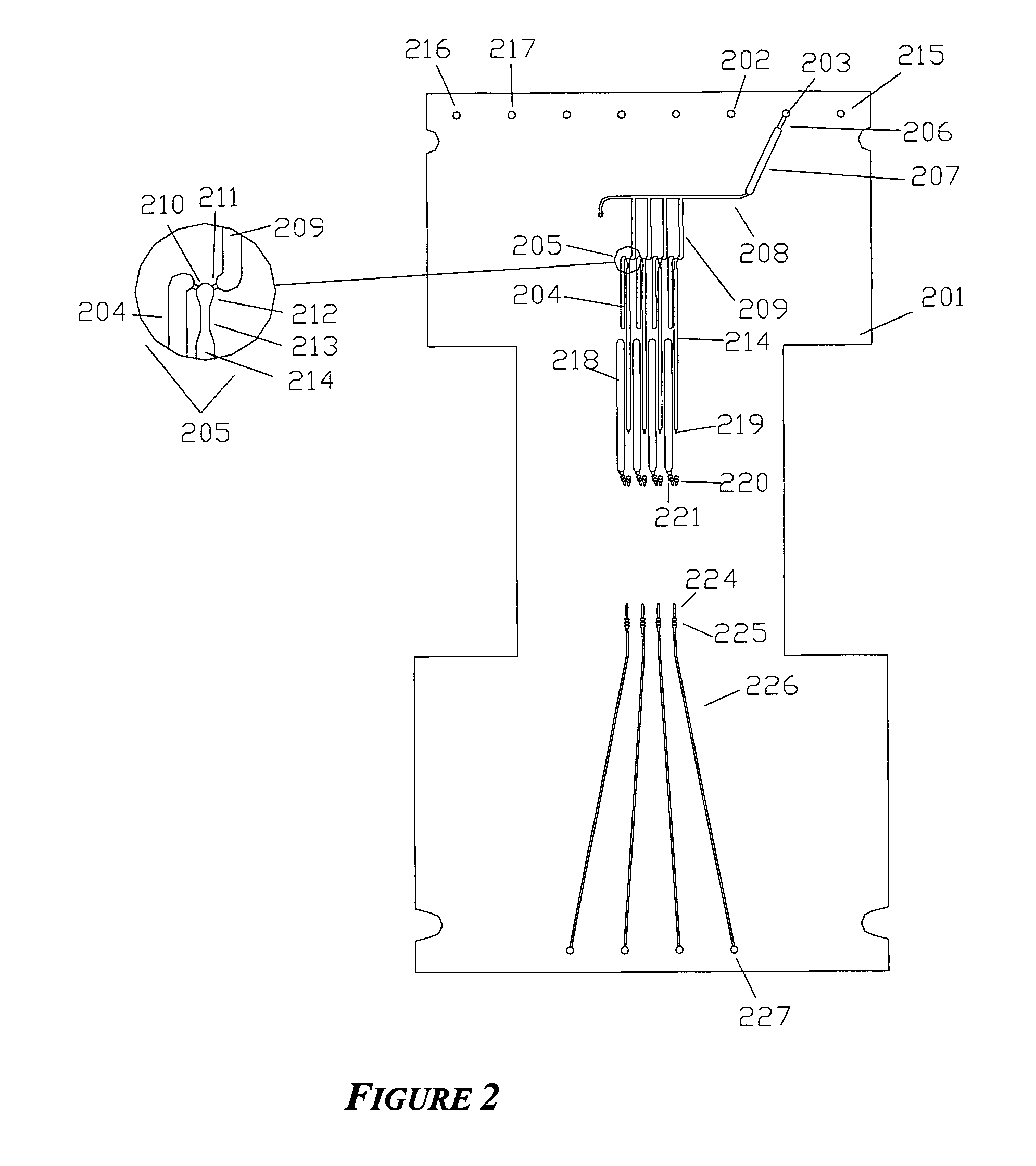Integrated nucleic acid analysis
a nucleic acid and integrated technology, applied in the field of microfluidics, can solve the problems of unmet needs for systems that eliminate all manual processing, unmet needs for miniaturization, unmet needs for ruggedization, etc., and achieve the effect of generating high information content and better than single base resolution
- Summary
- Abstract
- Description
- Claims
- Application Information
AI Technical Summary
Benefits of technology
Problems solved by technology
Method used
Image
Examples
example 1
Integrated Biochip for Nucleic Acid Extraction and Amplification
[0134]An integrated biochip for DNA extraction and amplification by PCR is shown in FIG. 1. This 4-sample device integrates the functions of reagent distribution and metering; mixing of reagents with samples; delivery of samples to a thermal cycling portion of the chip; and thermal cycling. The same biochip is used in Example 2 below and has additional structures for performance of cycle sequencing.
[0135]The biochip was constructed of 4 layers of thermoplastic as shown in FIGS. 2-5. The 4 layers are machined PMMA and have thicknesses of the layers are 0.76 mm, 1.9 mm, 0.38 mm, and 0.76 mm, respectively, and the lateral size of the biochip was 124 mm×60 mm. In general, biochips of at three or more layers allow the use of an indefinite number of common reagents to be divided among multiple assays: two fluidic layers and one layer that at least contains through-holes, enabling fluidic channels in the outer layers to ‘cross...
example 2
Integrated Biochip for Distribution of Cycle Sequencing Reagent, Mixing with PCR Product, and Cycle Sequencing
[0164]The biochips described in Example 1 were used. PCR product generated in tubes using the protocol outlined in Example 1 was added to both sample and PCR reagent ports of the biochip as described above. 50 μL of a cycle sequencing reagent (BigDye™ 3.1 / BDX64, MCLab, San Francisco) was added to port 106 (comprised of through-holes 215 and 308) and chamber 309. After installation of two pneumatic interfaces (one for the input and one for the output end of the chip), the PCR product was processed as described in Example 1 through to the PCR chamber, but without the PCR thermal cycling step. The disposition of the fluids in the chip was as shown in FIG. 9a.
[0165]The following pressure profile was carried out using the pneumatic system software; all solenoid valves corresponding to chip ports were closed unless otherwise noted:
[0166]1. A pressure of 0.1 psig was applied to po...
example 3
Ultrafiltration in 4-Sample Biochips
[0183]A 4-sample biochip for the performance of sequencing product purification was constructed of four layers, as discussed in Example 1, and is shown in FIG. 11. One additional element in construction was the ultra-filtration (UF) filter 1116, which is cut to size and placed between layers 3 and 4 prior to thermal bonding. The creation of a good bond around the UF filter necessitated the use of layer 3. Layers 3 and 4 create uninterrupted perimeters around the filter, because all channels leading to and from the filter are in the bottom of layer 2. (Bonding directly between layer 2 and 4, for example, leaves a poor bond to the filter where channels cross the filter.) In this example, a regenerated cellulose (RC) filter of molecular weight cut-off (MWCO) 30 kD was used (Sartorius, Goettingen, Germany). A variety of other MWCOs (10 kD, 50 kD, and 100 kD) have been examined, as has an alternative material, polyethersulfone (Pall Corporation, East H...
PUM
| Property | Measurement | Unit |
|---|---|---|
| volume | aaaaa | aaaaa |
| size | aaaaa | aaaaa |
| pressures | aaaaa | aaaaa |
Abstract
Description
Claims
Application Information
 Login to View More
Login to View More - R&D
- Intellectual Property
- Life Sciences
- Materials
- Tech Scout
- Unparalleled Data Quality
- Higher Quality Content
- 60% Fewer Hallucinations
Browse by: Latest US Patents, China's latest patents, Technical Efficacy Thesaurus, Application Domain, Technology Topic, Popular Technical Reports.
© 2025 PatSnap. All rights reserved.Legal|Privacy policy|Modern Slavery Act Transparency Statement|Sitemap|About US| Contact US: help@patsnap.com



